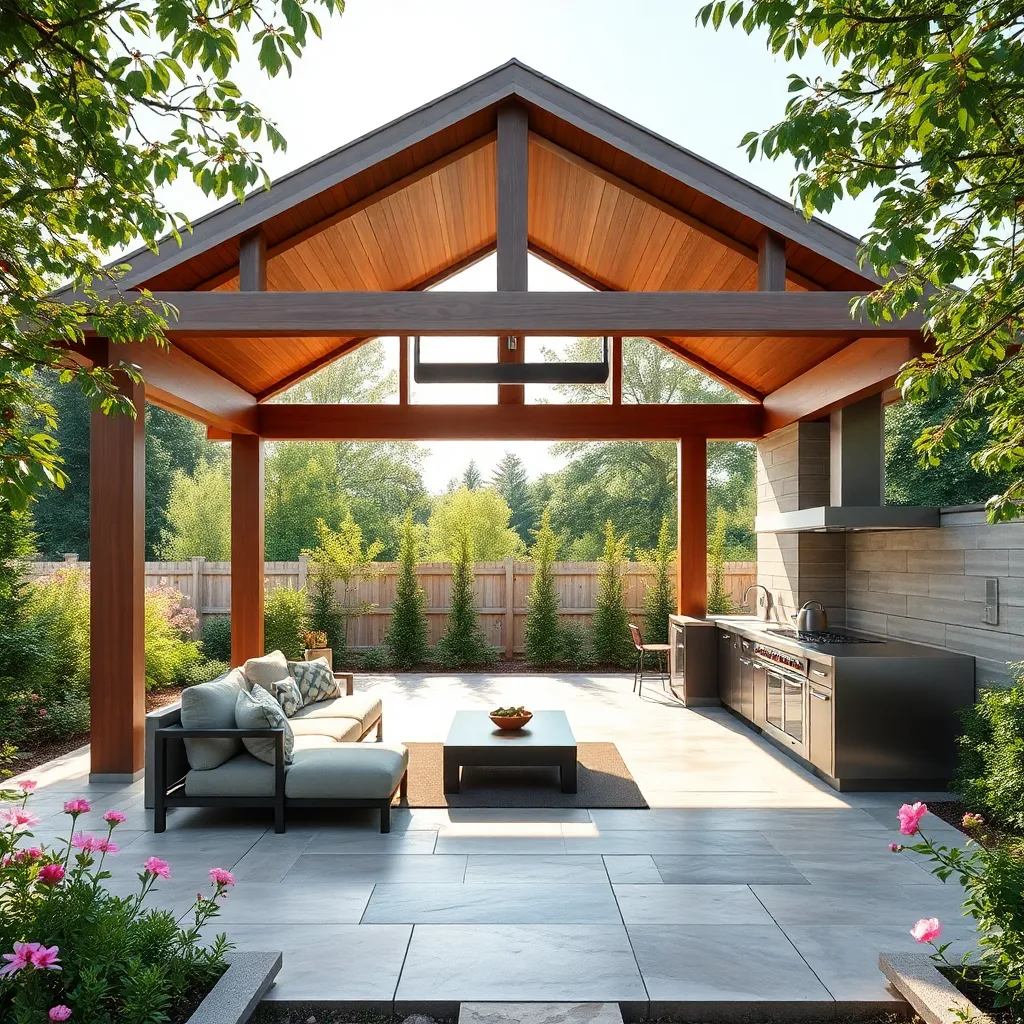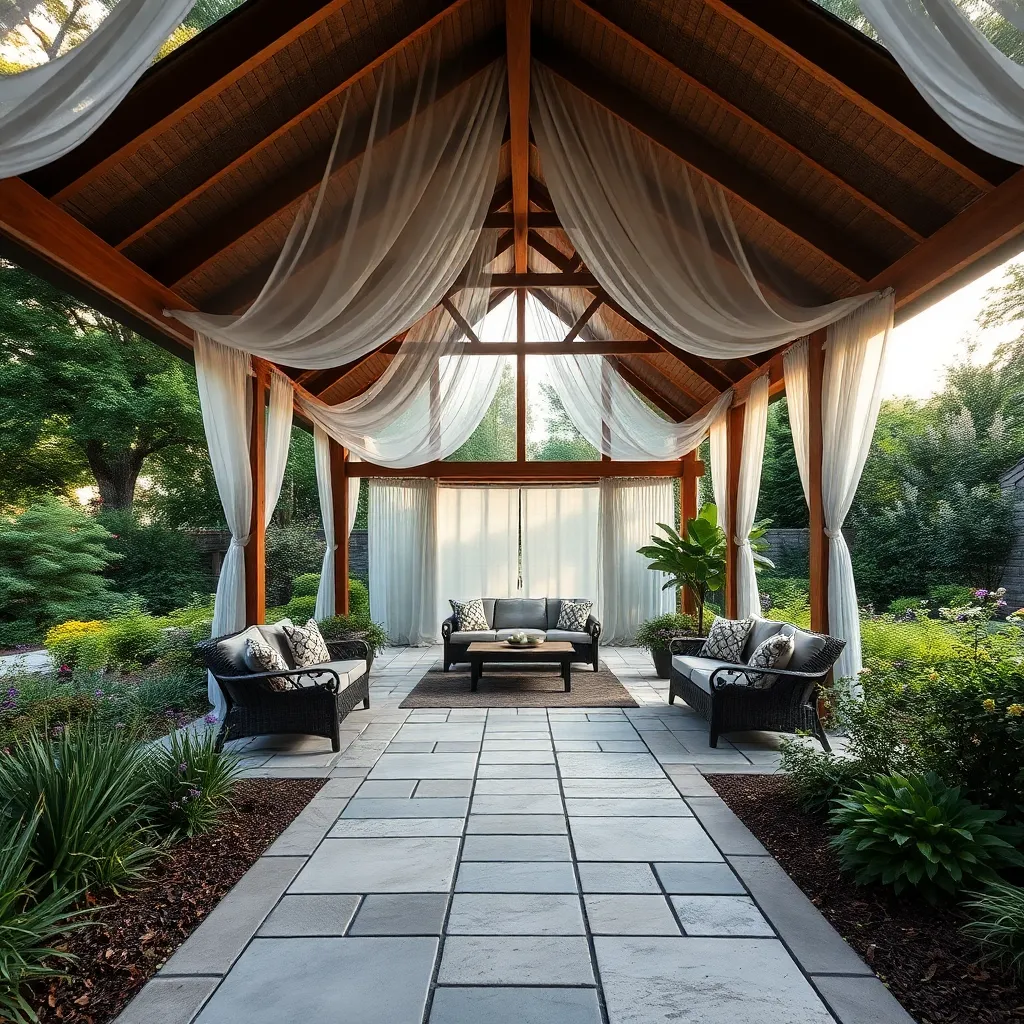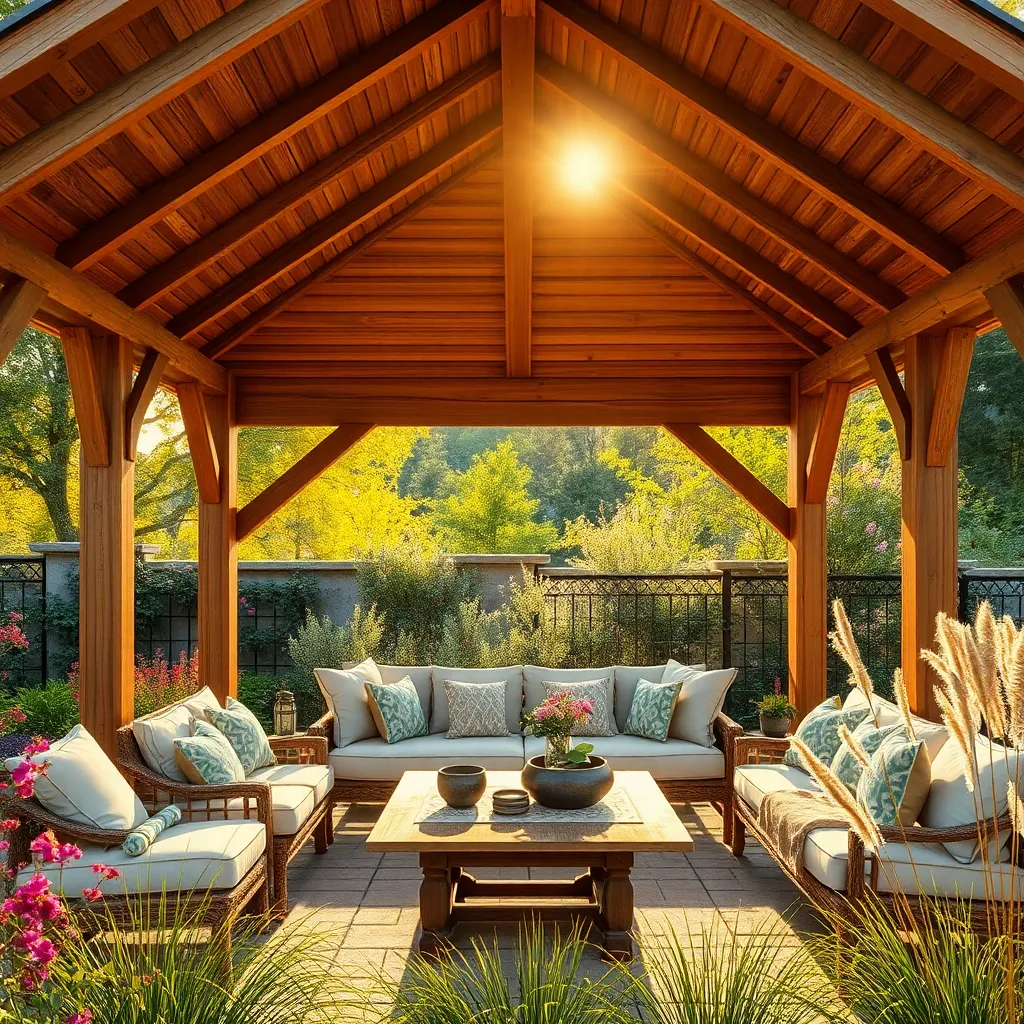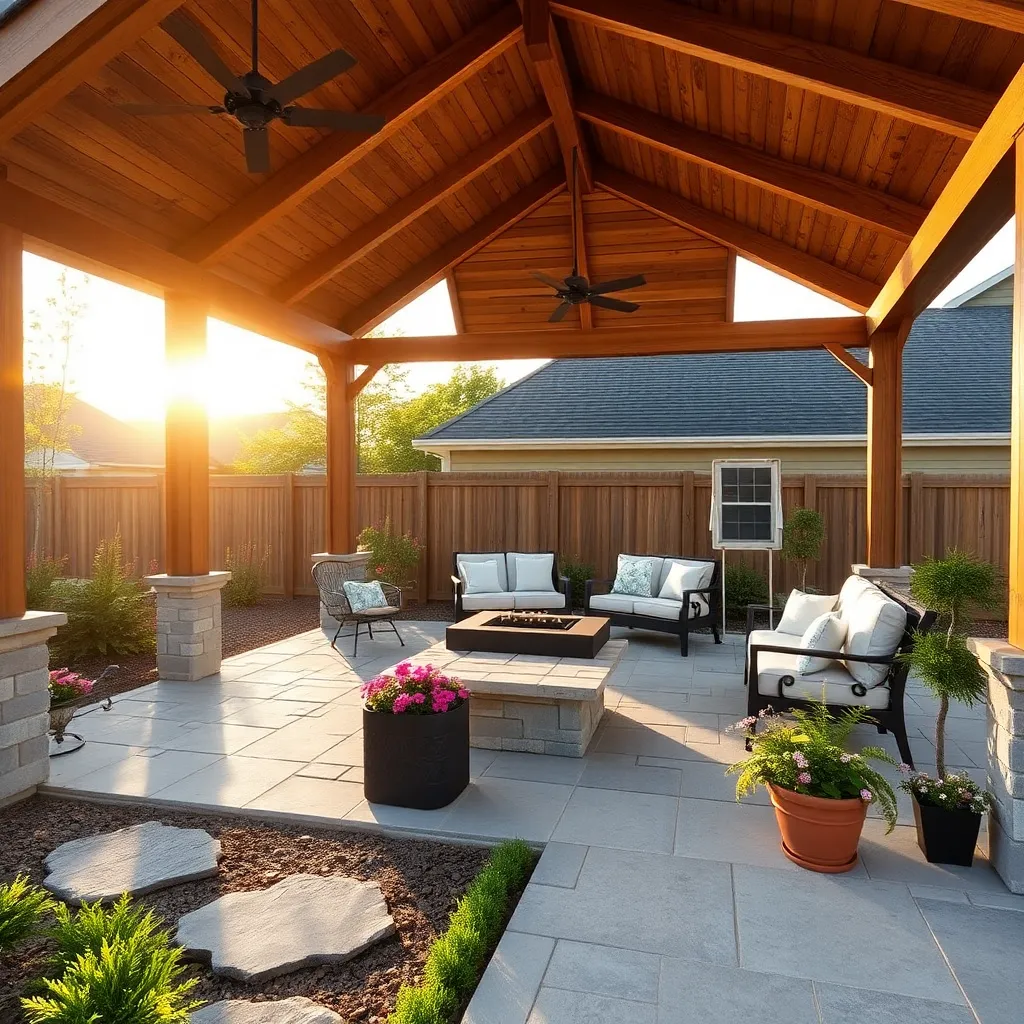Transforming your backyard into a personal oasis is more achievable than you might think, and choosing the right pavilion can be the cornerstone of this transformation. Whether you’re just starting your outdoor design journey or you’re a seasoned homeowner looking to enhance your space, understanding pavilion options can elevate your backyard experience from ordinary to extraordinary.
In this guide, we’ll explore the essential factors to consider when selecting a pavilion, from materials and styles to size and placement. You’ll gain practical insights into how a well-chosen pavilion can provide not just shelter, but a stylish focal point that enhances your outdoor lifestyle. Let’s embark on this journey to make your backyard the ultimate retreat.
Identify Your Backyard Needs

To identify your backyard needs, start by assessing the purpose of your pavilion. Are you looking for a cozy retreat to enjoy quiet mornings or a spacious area for hosting lively gatherings? Defining your primary use will help you determine the appropriate size and style. Consider your climate and how a pavilion will fit into your existing landscape; this will guide your choice of materials, like weather-resistant wood or durable aluminum, ensuring longevity and low maintenance.
Next, think about the design elements that will enhance both functionality and aesthetics. If you’re a beginner, focus on basic features such as a simple gabled roof or open sides for easy airflow. For a more advanced setup, consider adding custom touches like built-in seating or a fire pit. Incorporate elements that complement your home’s architecture to create a cohesive look. By aligning your pavilion’s design with your needs and existing outdoor space, you’ll create a welcoming extension of your home.
Measure Available Space Accurately

To ensure your pavilion fits perfectly, start by measuring your available space accurately. Use a tape measure to determine the length and width of the area where you plan to install the pavilion, and note any features like trees or slopes that might affect placement. Allow at least 2-3 feet of clearance around the pavilion for easy movement and maintenance, and consider the height of surrounding structures to maintain an open, airy feel.
For a more advanced approach, consider using graph paper or digital design software to sketch your backyard layout. This helps visualize how the pavilion will integrate with existing features such as paths, garden beds, and outdoor furniture. If you’re planning a custom structure, research materials like weather-resistant wood or powder-coated steel that offer durability and aesthetic appeal.
- Ensure materials complement your home’s style
- Consider local climate for material selection
This thoughtful planning ensures your pavilion not only fits but enhances your backyard’s overall design.
Choose Suitable Pavilion Style

When choosing a pavilion style for your backyard, start by considering the overall aesthetic of your space and how the pavilion will complement it. Whether you prefer a classic, rustic look or a modern, minimalist design, there are various styles to suit your taste. A traditional wooden pavilion with intricate carvings can add charm and elegance, while a sleek, metal frame with clean lines offers a contemporary touch. Materials like cedar or treated pine are excellent for durability and weather resistance, making them ideal for long-lasting outdoor structures.
For those seeking a more advanced approach, incorporating sustainable materials or solar panels into your pavilion design can enhance both functionality and eco-friendliness. Look for designs that include practical features such as built-in seating or integrated lighting to enhance usability. Ensure your pavilion blends with existing landscaping by considering the dimensions and proximity to other garden elements. As a guideline, opt for a pavilion size that allows at least 3-4 feet of space around it for easy movement and landscaping. This careful integration ensures your pavilion not only stands out as a focal point but also complements your entire backyard oasis.
Consider Material Options Carefully

When choosing materials for your pavilion, consider both durability and aesthetics to ensure it complements your backyard while standing up to the elements. Wood, metal, and vinyl are popular options, each offering distinct advantages. For a classic, natural look, opt for cedar or redwood, which are naturally resistant to decay and insects. Alternatively, metal options like aluminum or steel provide a sleek, modern appearance and are highly durable against harsh weather.
In addition to aesthetics, think about maintenance needs and budget constraints. Wood pavilions may require periodic staining or sealing, whereas metal and vinyl are low-maintenance, making them ideal for busy homeowners. Advanced tip: consider using a composite material that combines wood’s beauty with the low-maintenance benefits of synthetic materials. No matter your choice, ensure the pavilion is anchored properly with quality materials to withstand wind and provide a safe, long-lasting structure.
Evaluate Budget and Maintenance

When planning your pavilion, it’s essential to evaluate your budget thoughtfully to avoid unexpected expenses. Consider the initial costs of materials like wood, metal, or vinyl, each offering different price points and maintenance demands. For a budget-friendly option, vinyl is durable and requires minimal upkeep, making it ideal for homeowners who prefer a low-maintenance solution. On the other hand, natural wood provides a classic aesthetic but requires regular sealing and staining to maintain its appearance, which can increase long-term costs.
Maintenance is another critical factor that can influence your decision when selecting a pavilion. Choose materials and designs that align with the level of care you’re willing to commit to. For those ready for a bit more involvement, a wooden pavilion can be personalized with custom stains and finishes, adding unique charm to any backyard. Beginners might appreciate the simplicity of powder-coated aluminum, which is resistant to rust and requires only occasional cleaning. Regular maintenance not only extends the life of your pavilion but also enhances its beauty, ensuring it remains a cherished part of your outdoor space for years to come.
Conclusion: Creating Beautiful Outdoor Spaces
In choosing the perfect pavilion for your backyard, we explored five pivotal relationship concepts that can enhance your outdoor sanctuary. First, understanding each other’s needs helps you select a pavilion that reflects shared desires. Second, effective communication ensures all voices are heard in the decision-making process. Third, budgeting together fosters financial harmony and aligns with your collective goals. Fourth, taking into account long-term plans ensures your choice remains a source of joy for years to come. Finally, embracing compromise invites creativity and strengthens your bond.
As an actionable next step, sit down with your partner today and discuss which pavilion features resonate most with both of you. This exercise not only brings you closer but also sets a foundation for future joint decisions.
Remember, relationships thrive on shared experiences and thoughtful decisions. Bookmark this article to revisit these valuable insights whenever you’re planning a new home project. By nurturing your relationship through collaborative efforts, you’re paving the way for enduring success and fulfillment. Together, you can create a backyard oasis that mirrors the love and partnership you cherish. Save this guide and let it be a cornerstone for your future relationship endeavors.
